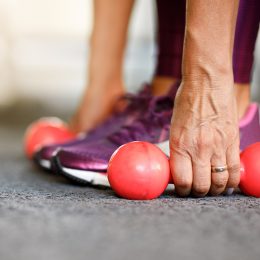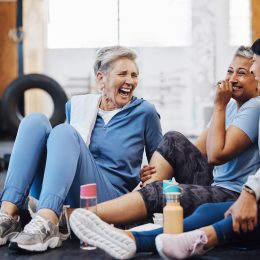The Best and Worst Exercises for Your Knees
Here’s what to do if achy knees limit your ability to move with ease.
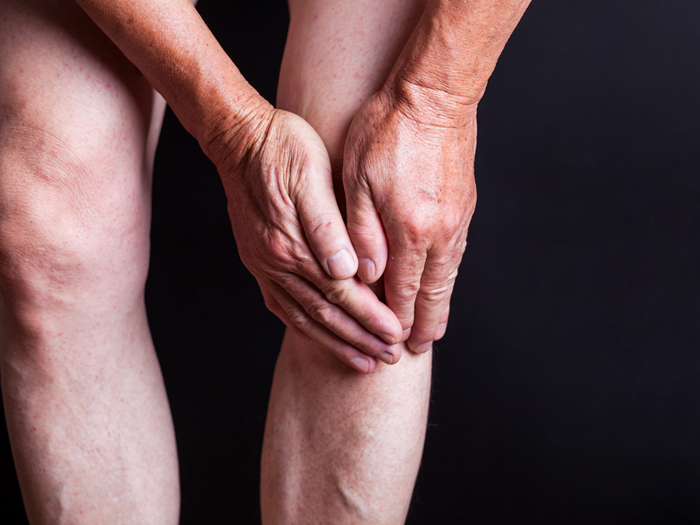
Some things get better with age—wine, parenthood, and Betty White, to name a few. Unfortunately, your knees are not one of them.
“Overuse is one of the main causes of knee pain,” says Lisa Woods, a personal trainer and yoga teacher in Eagle, Colorado. And the older we get, the more we’ve used them.
It’s a similar story for those with osteoarthritis of the knee, which affects 10 percent of men and 13 percent of women aged 60 and older, according to a review in Clinics in Geriatric Medicine. “Osteoarthritis is a form of arthritis caused by inflammation, breakdown, and the eventual loss of cartilage in the joints,” Woods says. “This happens over time, so it makes sense that most people affected are over 50.”
The list of knee injuries that often coincide with aging is long, says Douglas Ebner, D.P.T., a physical therapist at Ohio State University Wexner Medical Center. It includes:
- Patellofemoral pain syndrome, or pain in the front of the knee
- Meniscus tears and degeneration, or when certain tissues in the knee are torn
- Iliotibial band syndrome, or when the ligament that runs along the outside of the thigh and attaches to the knee is tight or inflamed
Whether you’ve already been diagnosed with these conditions or you’re hoping to prevent age-related aches and pains, certain exercises can help or hurt. Here are the dos and don’ts of working out to protect your knees.
The Best Exercises for Bad Knees
The most effective way to alleviate pain in your knee joints is simply to get moving, Woods says. “Walking, water aerobics, cycling, swimming, yoga, and strength training all help improve the symptoms associated with arthritic knee pain and knee pain in general.”
Based on the Cause of Your Pain
The best type of movement for you depends on the source of your pain. For example, if your knee pain is caused by inflammation, like with osteoarthritis, water aerobics and yoga are especially good choices, Woods says. “Being in the water reduces the impact on the knee joint,” she says. “Yoga provides stretching and bodyweight strength exercises, which can benefit the knees and overall well-being.” Check out more tips for exercising with arthritis.
If your pain is the result of an acute injury, Woods recommends strength training and balance exercises to assist with strengthening the knees after rehab. “Access to a gym and the use of the weight machines are helpful,” she says. “However, bodyweight squats and straight leg raises are good options that can be done at home.” Talk to your doctor about your recovery plan and how you can exercise safely.
Based on Your Lifestyle
The best exercises may also depend on your lifestyle. “If someone sits a lot, they need to do exercises that will allow the knee joint to extend,” Woods says. This could be as simple as a seated leg extension in which you lift the knee and extend the leg. One caution: People with arthritis or pain at the kneecap may want to avoid extending their legs past a 45-degree angle, Ebner says.
In contrast, someone who stands most of the day needs to give their knees a chance to bend. To do so, simply lift one heel and then the other toward your backside while standing—like you’re trying to kick yourself in the rear. Alternate from side to side a few times, and repeat the exercise every day.
For Everyone
No matter your type of knee pain or lifestyle, Woods highly recommends self-myofascial release, in which you massage the soft tissue around the knee with a foam roller. “Foam rolling can be very beneficial for those suffering from chronic knee pain,” Woods says. “The challenge is getting to the floor to do it.”
If you’re unable to easily move to the floor and back up, try this modification: Grab two tennis balls, and sit in a chair. Slowly roll the balls up and down your thighs while applying some pressure. Perform this exercise for at least one minute, and repeat it as often as desired.
The Strength Exercises Your Knees Need
It turns out, to fix your knees, you have to think outside your knees. People with bad knees should aim to strengthen their hips, Ebner says. Doing so will provide better support for the knees. He recommends the following hip-strengthening exercises.
1. Resistance-Band Side Step
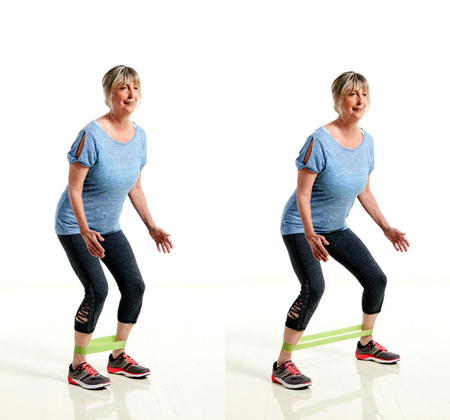
Loop a resistance band either above your knees (least resistance), below your knees (medium resistance), or around your ankles (greatest resistance). Bend knees slightly with your feet hip-width apart.
Step to the side until the band provides resistance, then slide your other foot over to re-create your original stance. Repeat this sidestepping movement for 10 to 15 feet in one direction (or as far as you can), and then cover the same distance in the other direction.
2. Clamshell
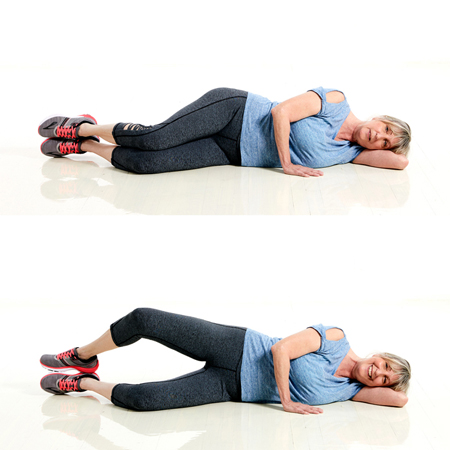
Lie on one side with your legs stacked and knees bent at a 45-degree angle.
From here, keeping your hips steady and your top foot down, lift only your top knee as high as you comfortably can. Your legs should mimic a clam opening. Pause, then slowly lower your knee to return to the starting position. That’s one rep. Aim for 15 to 20 reps per side.
3. Glute Squeeze
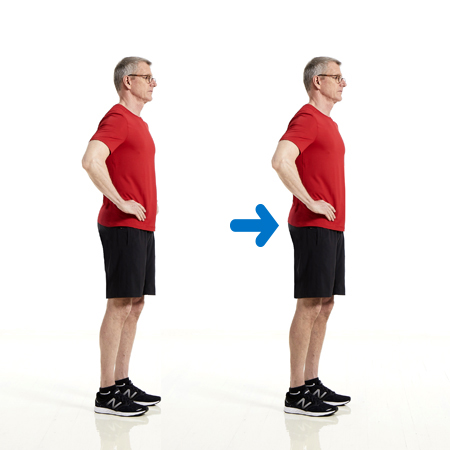
Stand with feet shoulder-width apart. Squeeze your glutes as tightly as you can for four seconds. Release and repeat for 10 to 12 reps total.
4. Quad Sets
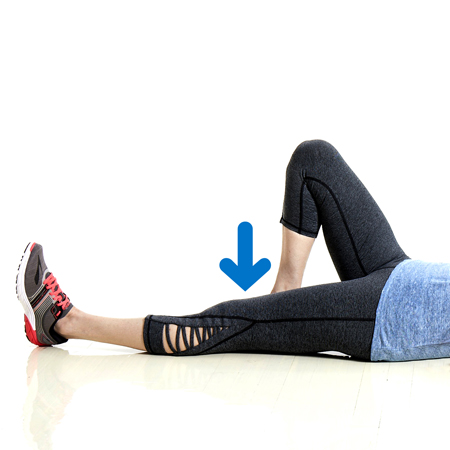
Lie down with one leg straight out in front of you. Your other leg can be bent with foot flat on the floor, as shown, or also straight.
Tighten the muscles on top of your thigh by pressing the back of your knee flat down to the floor. Hold for about six seconds, then rest up to 10 seconds. Aim for eight to 12 reps. If you feel discomfort under your kneecap, try putting a small, rolled towel under your knee.
The Worst Exercises for Bad Knees
The worst exercises for knees may depend on the knees in question, Woods says. “It truly depends on the individual, the surface, the shoes, and the fitness level.”
Subscribe to our newsletter
It's quick and easy. You could be one of the 13 million people who are eligible.
Already a member? Click to discover our 15,000+ participating locations.
Follow Us
That’s why it’s always a good idea to talk to your doctor or physical therapist about which types of movement you absolutely shouldn’t be doing. Still, there are a few exercises that anyone with bad knees should shun, Ebner says, including the following.
1. W Sit and Hurdler Stretch
“W sitting is normally seen in children, but has also been adopted by athletes to stretch hip rotators and quadriceps,” Ebner says. “The hurdler stretch is a similar stretch focusing on one leg at a time. Both stretches are bad because of the large amounts of torque applied to the knee, hip, and ankle.”
Fix it: Find stretches for all fitness levels on the SilverSneakers GO app (free, iOS and Android). Like a stretch? You can save it to your favorites.
2. Squats and Lunges with Knees Caving In
You know you shouldn’t allow your knees to collapse inward as you lower into a squat, but do you know why? “Squatting with the knees coming together does not equally load the joint, which causes excessive wearing of the knee,” Ebner says. “Besides the unequal loading, this movement pattern can lead to ACL tears, and does not lead to strong and powerful legs.”
It applies to lunges too. “The knee collapsing inward in a lunge position can be related to poor core control, hip strength, and trunk stability,” Ebner says.
Fix it: When performing squats and lunges, think about pressing your knees outward slightly. This will help you maintain proper alignment while also activating your glutes.
3. Lunges with Knee Passing Over Toes
“If the knee goes past the toes when lunging, the compressive forces at the kneecap increase significantly,” Ebner says. This can cause grinding and irritation in the knee joint.
Fix it: For most people, your knees should be directly over your toes—or not too far past your toes. But what’s more important is how you distribute your weight: Think about keeping your weight in your heel and mid-foot. That way, if your knee does move forward slightly, the forces won’t be so great on it.
Take Your Favorite SilverSneakers Classes Online!
SilverSneakers members can access live fitness classes and wellness workshops through SilverSneakers LIVE. See the latest schedule and RSVP for classes here.
Not a member? If you have a Medicare Plan, it may include SilverSneakers—at no additional cost. Check your eligibility instantly here.



